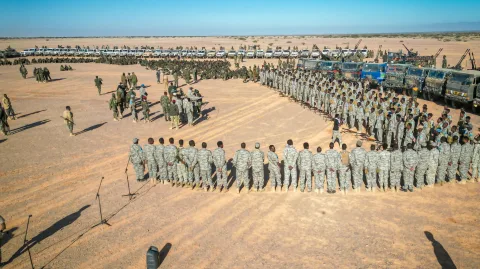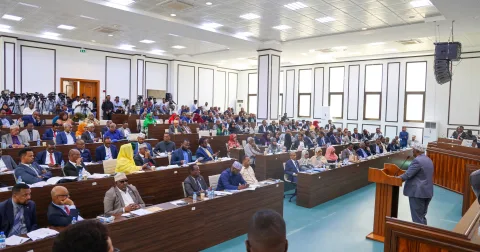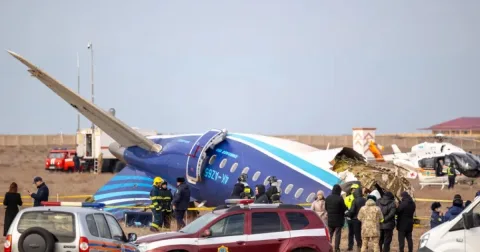With more than 90% of the world’s trade being carried by sea, the importance of maritime…

With more than 90% of the world’s trade being carried by sea, the importance of maritime transport to global trade is one that cannot be underestimated. Therefore, anything that disrupts the principal of freedom of navigation or the safety and security of the personnel on board the vessels that bring us our goods also endangers the economic vitality of the world as a whole.
Throughout history, maritime piracy has been witnessed in almost every corner of the globe. And while some of the factors that contribute to the emergence of piracy in different parts of the world have been well documented, others still remain under-researched.
Whether it is the main piracy hotspot of today, the Malacca Straits, where more than half of all the reported piracy incidents occurred in the first six months of 2015. And where the Indonesian navy acknowledges that “90 percent of piracy cases in the Malacca Strait area turn out to be bogus claims related to insurance fraud or business competition“, orchestrated by organized criminals.
Despite the fact that the countries surrounding the Malacca Straits have ample resources at their disposal for the fight against piracy, their task remains a difficult one, mainly due to the complex geography of the region. With a busy shipping lane where one-fourth of the world’s traded goods transit annually, as well as the presence of thousands of islets and the territorial waters of a number of countries converging in the same area, the Malacca Straits remains an ideal place for pirates to conduct their trade.
The other major piracy hotspot, the Gulf of Guinea, where there has been major coordination of organized criminals acting across borders, where ships are hijacked in the waters of one country, sailed to the waters of another, in order for them to be discharged of their valuable cargo, which in most cases turns out to be hydrocarbons.
Leading to the current Nigerian Chief of Naval Staff, Vice Admiral Ibok Ibas to note that “these maritime threats have become transnational and have gone beyond the capability of one nation to contain“. However, in recent months, due to the drop in oil prices, pirates in this region seem to be deviating from this cargo-theft model to a more hostage for ransom model, mainly for monetary reasons.
In the horn of Africa (HOA) region, where maritime piracy has been brought under control, it is widely accepted that illegal fishing and the dumping of hazardous and toxic waste in Somali waters, were some of the major factors that contributed to the rise of piracy in this region.
Somalia has indeed suffered for a long time from the rampant illegal unreported and unregulated fishing (IUUF) within its waters. The United Nations is on record for describing Somalia’s waters as having become a “free for all” where roughly “$300 million of seafood” are taken illegally every year. As well as the rampant IUUF in Somali waters, Somali fishermen had to contend with their fishing gears being deliberately destroyed, their vessels rammed and shot at from illegal fishing vessels.
A recent report by secure fisheries indicated that foreign industrial fishing vessels engaged in IUUF in Somali waters were taking over 132,000 metric tons of fish from Somali waters annually, which dwarfs the 40,000 metric tons which the local fishermen are able to take out.
However, what still remains under-researched, is the extent of outside involvement in the long range pirate attacks that were witnessed in the latter years of the 2000s, where at times vessels were being hijacked hundreds of miles outside of Somali waters. The level of organization required for these long range pirate attacks required financing amongst other things, which in most cases was not readily available locally.
At the height of the piracy problems in the HOA region, UNODC noted that “Piracy in the region has increased so much that it is now considered a form of transnational organized crime“. And with this in mind, the United Nations Security Council passed resolution 1950 in 2010, which urged states “to further investigate international criminal networks involved in piracy off the coast of Somalia, including those responsible for illicit financing and facilitation…support the investigation and prosecution of those who illicitly finance, plan, organize, or unlawfully profit from pirate attacks off the coast of Somalia“.
In this respect, kudos goes to the British police who are currently conducting investigations into an alleged scam by transnational organized criminals, involving a false claim of a cargo ship hijacking by pirates in the HOA region.
Moreover, the World Bank estimates that the “foot soldiers” that were committing the real hijackings, not the false claim ones, were receiving a standard fee of about 1%-2.5% for an average ransom payment for a captured ship. Which means that the lion’s share of the ransom payments ultimately ended up with the “financiers”.
What comes to mind is the old adage of “follow the money”.
There is already a precedent for transnational organized criminals taking advantage of Somalia’s political instability for their own criminal endeavors. As detailed in the Greenpeace report The Toxic Ships, published in 2010, soon after the collapse of the of the Siad Bare government in the early 1990’s, transnational organized criminals who were heavily involved in the waste disposal industry in certain parts of the world made headway into Somalia.
These organized groups, after offering legitimate companies and organizations across the world to dispose of their hazardous and radioactive waste for a fee, found it much more lucrative to dump container loads of this waste in Somali territory, both onshore and offshore.
Resulting in coastal communities complaining from “acute respiratory infections, heavy dry coughing, mouth bleeding, abdominal hemorrhage and unusual chemical skin reactions”. As well as “excessive incidence of cancer, unknown diseases, spontaneous miscarriages of pregnant women and child malformation“. However, it was difficult to obtain hard evidence of the waste dumping that had taken place in Somali waters until the 2004 Tsunami washed ashore containers that contained hazardous waste.
Despite all of this, the common narrative regarding piracy in the HOA region is a simple one of Somali fishermen that have gone rogue, and who must be stopped at all costs. Which in turn has lead to innocent Somali fishermen being exposed to serious harm within Somali waters. While at the same time, the masterminds who orchestrated these crimes against the Somali people and the international community remain at large.
Nowadays “Somali piracy” is discussed in historical terms. And it is widely acknowledged that the international naval patrols and maritime security contractors were instrumental in bringing about security to the waters of this region.
However, there is a tendency downplay the crucial role played by Somali’s, both professionals and civilians, in bringing about the demise of piracy in this region and in the process portray Somali’s as being without agency.
According to a UNODC report, despite all the capacity challenges faced by Somalia, “the local authorities appear to have been remarkably effective in deterring piracy in large swathes of the country”. The report also notes that “the decline of piracy appears to have begun about one year before the first of these [EUNAVFOR] operations”. And in a survey conducted by UNODC and Oceans Beyond Piracy into the motivations and deterrents of piracy in Somalia, the main reason for people moving away from piracy was given as “family and community pressures“.
Therefore, although the international naval patrols and private maritime security contractors have indeed acted as deterrents out in the open ocean and continue to do so, the most crucial battle against piracy in the horn of Africa region was won on terra firma.
Fortunately for Somali’s, despite the recent civil war and the continuing political upheaval, and despite the devastation to infrastructure and the continuing lack of capacity of the law enforcement agencies, the social fabric of the nation still remains intact. This is evidenced by the 2015 Global Law and Order survey by Gallup Analytics, which placed Somalia at 72 out of 141 countries surveyed, in regards to how safe the public felt to walk alone in their neighborhoods at night.
This remarkable sense of security, which any NGO employee that has worked in Somalia can attest to, can be attributed to the fact that in Somalia, security is not the sole preserve of the state, but is instead a responsibility shared by everyone for the greater good of the community. This community-based security was a major factor in the fight against piracy in the HOA region and there are lessons to be learned from this for the current piracy hotspots around the world.
Globally, there cannot be a one size fits all when tackling maritime piracy. The success brought about by the combined efforts of the international community and the Somali people in tackling piracy in the horn of Africa region should be built upon by reinforcing the Somali maritime law enforcement agencies.
In the long term, the maritime security of the horn of Africa region will require a readjustment from the over-reliance on international naval patrols to a much more enhanced, locally lead maritime law enforcement agencies.
As for the Gulf of Guinea and the Malacca Straits, due to the complex geography of these regions, there will need to be increased information sharing, as well as joint patrolling between the coastal states in order for there to be a fighting chance against the upward trend of piracy in these regions. However, the determining factor on whether the fight against piracy in these regions can be won will be dependent on the extent of coastal community involvement.





